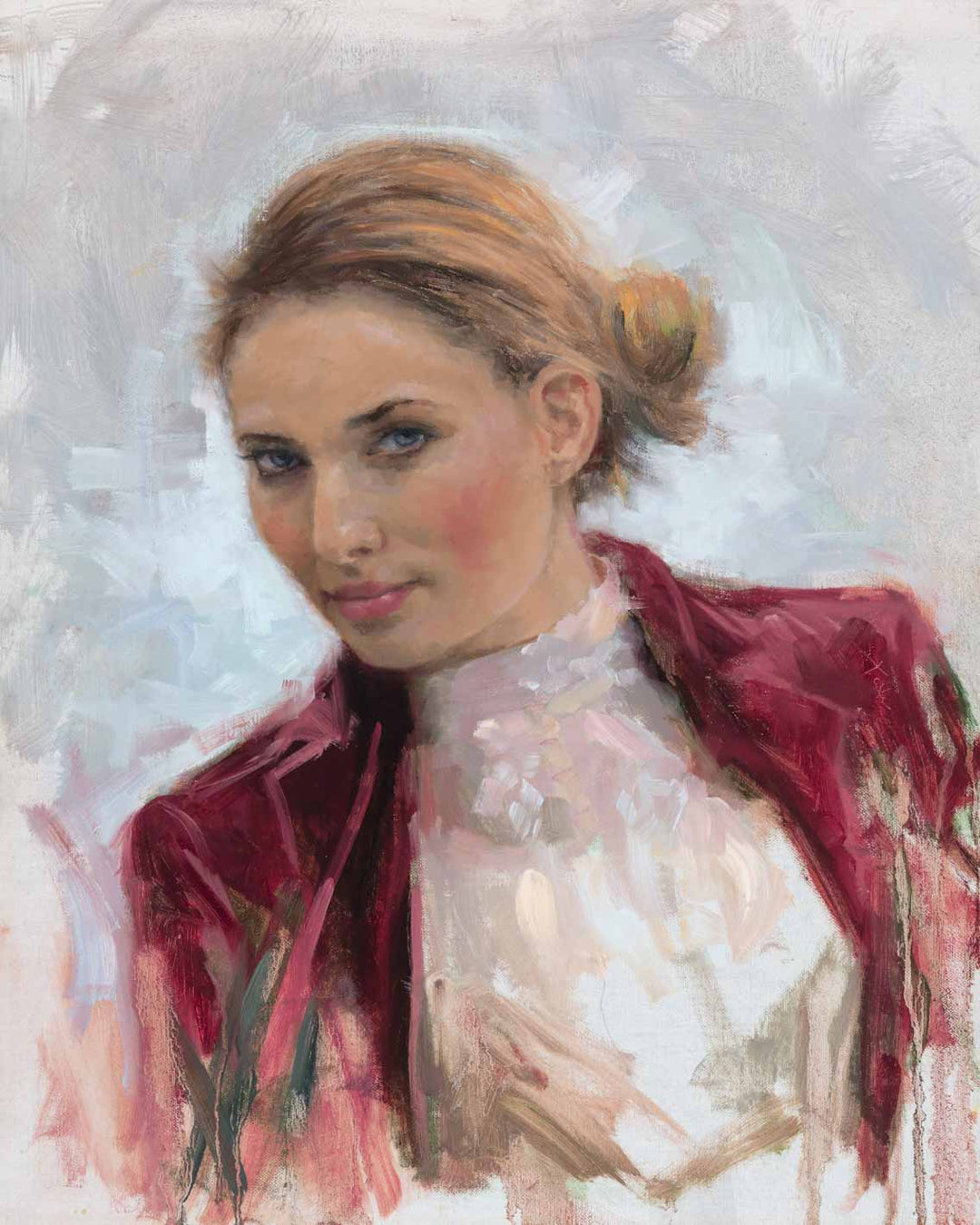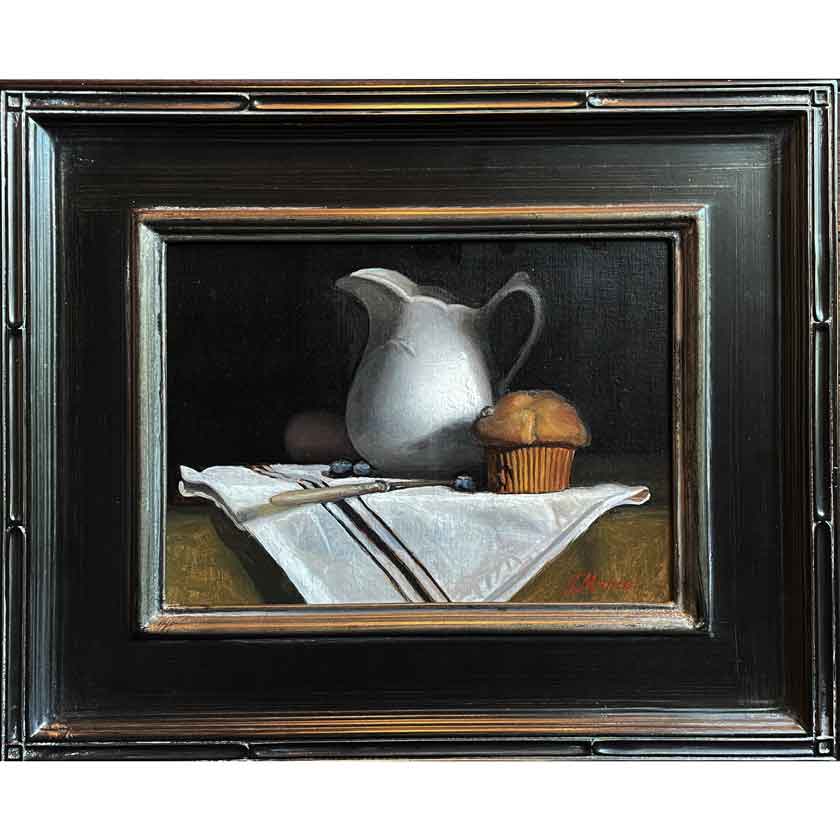The Advantages of Getting Oil Paints: Why They Are a Timeless Investment
The benefits of buying oil paintings expand beyond mere aesthetics. These art work carry historic relevance and cultural value, making them worthwhile additions to any collection. Their special textures and methods add to an interesting visual experience. In addition, well-known artists typically see their job value in time, offering a potential economic benefit - oil paintings for sale. As one checks out the complex reasons for buying oil paints, the deeper implications of such a choice become increasingly obvious
The Visual Charm of Oil Paintings
The appeal of oil paints exists in their dynamic shades and abundant appearances, which can transform any space right into an interesting environment. These artworks have a depth that astounds visitors, drawing them right into the complexities of the brushstrokes and the interaction of light and shadow. The glossy finish of oil paint boosts the aesthetic experience, offering life to scenes and topics in such a way that other mediums commonly can not achieve. Additionally, the variety of designs-- from timeless to contemporary-- enables a varied choice that can complement any type of decoration. The psychological resonance communicated with shade selections and methods adds a layer of connection between the observer and the art work, making oil paintings not just attractive items, yet powerful expressions of creative vision.
Historic Importance and Social Worth
Oil paintings function as necessary web links to an imaginative heritage, showcasing methods and designs that have actually advanced over centuries. They envelop social expressions and identities, showing the values and stories of their time. By getting these works, people add to the conservation of background and the recognition of diverse cultural legacies.
Artistic Heritage Conservation
While lots of may neglect the importance of artistic heritage, purchasing oil paints plays a vital function in preserving social and historic narratives. These artworks offer as aesthetic documents of their time, recording the essence of social values, traditions, and historic events. By getting oil paintings, enthusiasts add to the guarding of social heritages, making certain that future generations can value and learn from these creative expressions. Each piece shows the unique tale of its developer and the context in which it was made. Furthermore, the ongoing admiration and screen of oil paintings in different setups assist to cultivate an understanding of varied imaginative movements, improving the social landscape. Spending in oil paints is not just a monetary choice but an act of cultural stewardship.
Cultural Expression and Identification
Art offers as a powerful medium for social expression and identification, mirroring the diverse narratives that shape societies. Oil paints, in certain, catch the significance of cultural heritage, showing historic contexts and sociopolitical environments. Each brushstroke conveys feelings and tales special to particular customs, enabling customers to involve with the artist's social background. This connection fosters a feeling of belonging and recognizing among various communities. Additionally, oil paintings typically work as visual documentation of social development, showcasing shifts in identity over time. The investment in these art work not just supports musicians however additionally protects social traditions, making them significant assets for enthusiasts. Eventually, oil paintings enhance one's recognition for the intricacies of human experience and the rich tapestry of social identity.
Recognition in Worth Gradually

The recognition of oil paintings with time is influenced by various aspects, including historic value fads that mirror altering preferences and cultural relevance. Additionally, the credibility of the musician plays an essential function in determining the art work's market worth, often boosting as the artist gains acknowledgment. Market demand fluctuations can even more affect prices, making oil paintings a potentially profitable financial investment for enthusiasts.
Historic Worth Fads
As collectors seek to purchase concrete assets, the historical value trends of oil paints reveal an engaging narrative of admiration over time. Historically, oil paintings have shown a regular higher trajectory in value, specifically for works by recognized musicians. Economic cycles and market demand have actually influenced these fads, with periods of increased passion often resulting in considerable price rises. Auction records regularly highlight the exceptional returns accomplished by legendary pieces, even more reinforcing the concept of oil paintings as viable lasting financial investments. Furthermore, social movements and shifts in enthusiast preferences have occasionally stimulated unforeseen recognition, disclosing that the art market, while somewhat uncertain, typically prefers quality oil paints. As a result, recognizing these historical patterns can lead financiers in making informed decisions.
Artist Track Record Effect
While the credibility of an artist plays a necessary role in the recognition of oil paints, it is essential to acknowledge that this impact can vary considerably based upon numerous aspects. Developed artists, especially those with a substantial historic or social impact, have a tendency to see their jobs appreciate a lot more rapidly. On the other hand, lesser-known or emerging musicians might not experience the same degree of demand, affecting their art work's worth. Furthermore, the musician's capability to produce a consistent body of work and keep relevance in the art globe can influence long-lasting gratitude. Collectors often look for jobs from artists who are recognized by respectable galleries and organizations, which can better enhance the value of an oil painting over time, making artist reputation a vital factor to consider in financial investment choices.

Market Demand Changes
Just how do market demand changes influence the admiration of oil paints with time? The value of oil paintings is inherently linked to market demand, which can vary based on economic problems, trends, and collection agencies' choices. In times of financial success, need commonly rises, causing increased costs as more purchasers get in the market. On the other hand, throughout financial recessions, demand may diminish, triggering worths to stagnate and even decline. Furthermore, the appeal of specific musicians can change, affecting their work's value. Ultimately, understanding market demand is necessary for financiers, as well-managed collections can value substantially with time, mirroring both the talent of the musician and the wider market characteristics. This interplay highlights the value of tactical buying in oil painting financial investments.
Distinct Structures and Methods
Oil paintings astound visitors with their distinctive appearances and methods, showcasing the artist's mastery over the medium. The thick application of paint, referred to as impasto, creates a three-dimensional effect, welcoming touch and boosting visual deepness. Musicians typically use different brush strokes, layering, and glazing methods to achieve intricate information and luminous colors. This flexibility enables for rich contrasts and refined shifts, making each artwork uniquely meaningful. Furthermore, the sluggish drying time of oil paint enables artists to mix shades flawlessly, causing smooth slopes and lively shades. These methods add to the painting's overall personality, making it a compelling focal point. Each oil paint acts as an indicator of the creative thinking and ability intrinsic in traditional creative practices.
Convenience in Home Style
The special textures and methods of oil paints not just showcase imaginative ability but additionally enhance their versatility in home design. These artworks can perfectly match numerous indoor designs, from modern minimal to traditional elegance. Oil paintings work as focal points, drawing interest and triggering conversation among visitors. Their rich colors and deepness can balance with various shade schemes, making them adaptable to changing design trends. In addition, the emotional vibration of oil paints can produce setting, whether it be heat in a comfortable living-room or vibrancy in a creative office. By incorporating oil paintings, home owners boost their areas, transforming them right into thoughtfully curated settings that reflect personal preference and imaginative appreciation. Inevitably, oil paintings are an enduring choice for enhancing home appearances.
Connection to Distinguished Musicians
While lots of art types can evoke adoration, acquiring oil paints commonly develops a distinct connection to distinguished artists throughout history. Owning an oil paint enables collectors to engage with the creative visions of masters like Van Gogh, Monet, and Rembrandt. Each brushstroke symbolizes the artist's emotions, objectives, and methods, using insight into their globe. This link transcends time, as each item lugs a story that shows the historic and cultural context of its creation. Enthusiasts not only obtain an artwork but also a piece of the artist's tradition. As art lovers discover the stories behind these paints, they obtain a deeper gratitude for the workmanship and artistic motions that shaped their advancement, enhancing the value of their financial investment.
Emotional and Emotional Benefits of Art
Art often works as a powerful driver for emotional and emotional health. The visibility of oil paints in a living area can stimulate a series of emotions, from harmony to ideas. Their lively colors and complex details provide viewers a getaway, enabling representation and consideration. Researches suggest that engaging with art can minimize tension and anxiousness, promoting a feeling of calm. In addition, having original artwork can create an individual link, enhancing feelings of pride and happiness. This emotional bond usually results in a deeper appreciation of one's environments, transforming a home into a home. Eventually, the mental benefits of art extend beyond aesthetics, adding to overall mental wellness and improving life experiences.

Regularly Asked Questions
Just how Do I Choose the Right Oil Paint for My Space?
Selecting the appropriate oil paint involves considering the area's color design, size, and overall aesthetic. One ought to assess personal taste, the painting's emotional impact, and how well it matches existing design prior to deciding.

What Factors Influence the Worth of an Oil Paint?
The value of an oil paint is affected by factors such as the musician's credibility, provenance, historical value, get more info rarity, market, and condition demand. Each component adds to general worth and charm among enthusiasts.
Just How Can I Care for and Preserve My Oil Paint?
To look after and keep an oil paint, one must consistently dirt it with a soft cloth, avoid direct sunlight exposure, control moisture levels, and think about expert cleaning to protect its vibrancy and stability.
Exist Details Artists Known for Their Oil Paintings?
Countless artists are renowned for their oil paintings - oil paintings for sale. Noteworthy figures consist of Vincent van Gogh, Claude Monet, and Rembrandt, each celebrated for their unique strategies and payments to the art world through dynamic, distinctive oil tools
Where Can I Acquisition Genuine Oil Paintings?
Authentic oil paints can be bought from reliable galleries, art fairs, and on-line platforms concentrating on art. Collection agencies need to confirm the credibility and provenance before making a purchase to assure a valuable investment. Historically, oil paints have actually demonstrated a constant higher trajectory in worth, particularly for works by recognized artists. While the online reputation of an artist plays a crucial role in the admiration of oil paints, it is essential to recognize that this impact can differ substantially based on a number of factors. Oil paints mesmerize visitors with their unique textures and methods, showcasing the artist's mastery over the tool. While numerous art kinds can evoke admiration, acquiring oil paints typically establishes a special link to prominent artists throughout background. The value of an oil painting is influenced by factors such as the musician's online reputation, provenance, historical relevance, rarity, market, and condition demand.